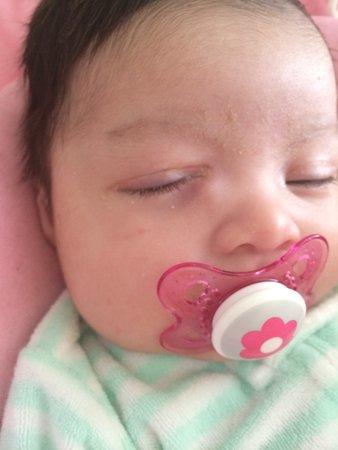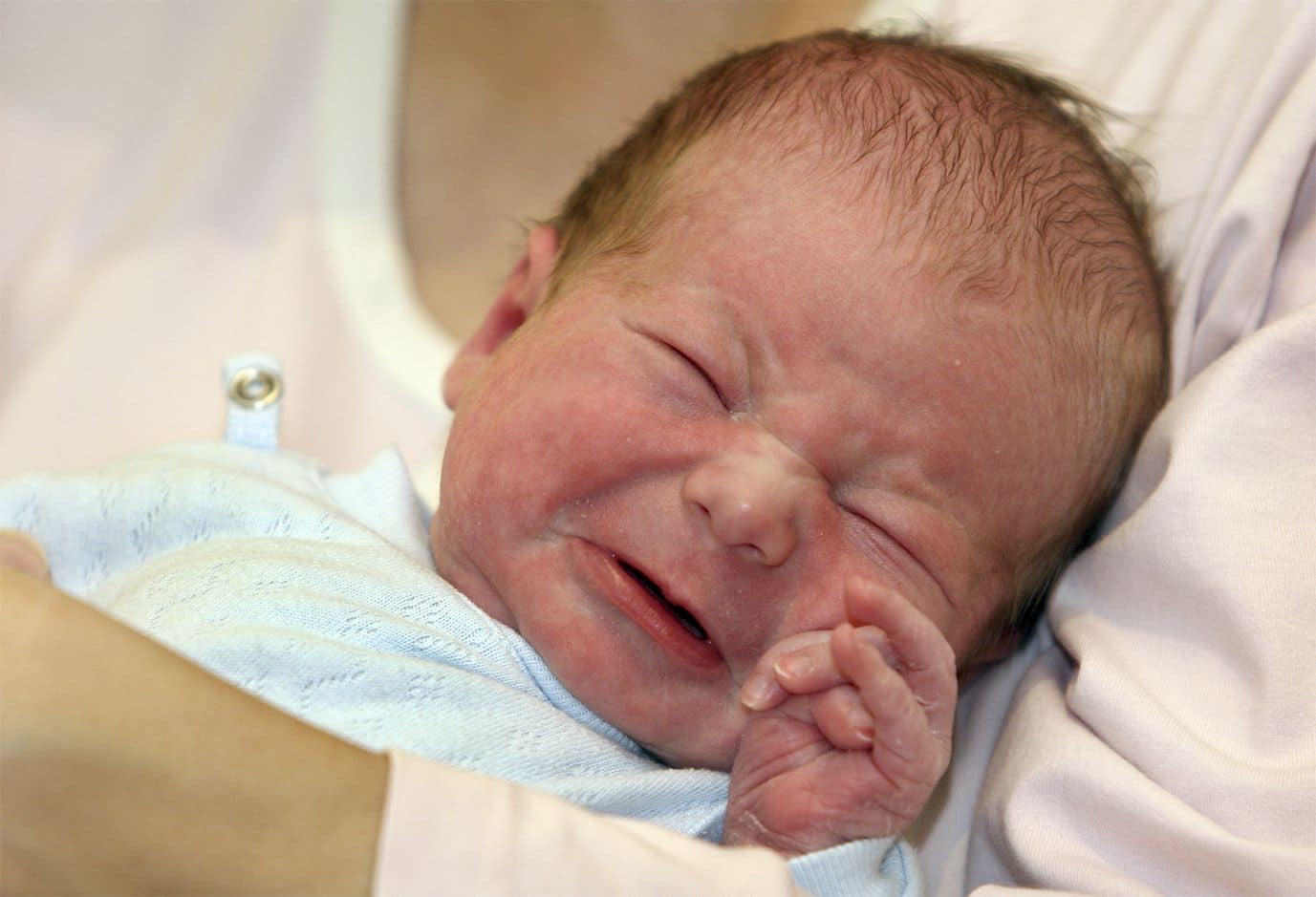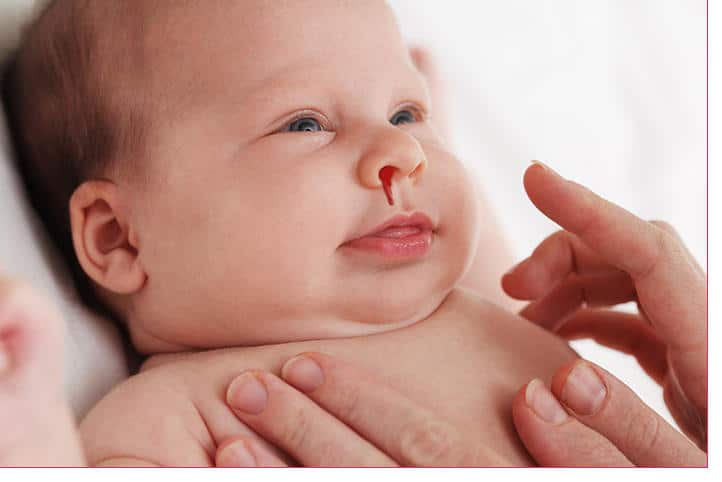Blocked tear duct in an infant: Symptoms and Treatment
Not all babies who open their eyes to the world start their lives smoothly. Some problems can turn infancy into a difficult period. Although it is considered a minor problem at the beginning of these difficult situations for both babies and parents, blocked tear duct infant can bring much bigger problems. But; How do you know if your baby has a blocked tear duct? or What causes a blocked tear duct in infants? Lets go to deep into our article for answers..
You may see a burning in your baby’s eyes when your baby wakes up, which may be the cause of blocked tear duct baby. The newborn baby is constantly irritated and irritated on both eyes in one eye, and an eye doctor should be consulted in mind that the eye may be blocked. Canal obstruction can be opened until the first year of age by massaging under infection control.
What causes blocked tear duct in an infant?

sticky eyes, already crying
- Tear canals are blocked for various reasons.
- Congenital blockade: up to a fifth of all babies are born with blocked tear ducts. This may be due to underdeveloped or abnormal channels, or developmental problems in the structure of the face and skull.
- Narrowing of the canals in old age: In the course of the aging process, the openings of the tear ducts in adults can narrow, which increases the likelihood of a tear duct blockage.
- Infections and inflammations: Infections and inflammations of the tear ducts, eyes and nose can all cause clogged tear ducts. A tear duct blockage itself can also lead to infections and inflammation.
- Facial injuries and trauma: Injuries that affect the tear ducts or the surrounding bone structure can lead to clogged tear ducts.
- Tumors, cysts and stones: Clogged tear ducts can also be caused by tumors and other growths.
As you can see, tear ducts are also a sign of underlying diseases, even if they trigger a variety of symptoms. If you have any problems with your baby’s eyes, always ask an ophthalmologist for advice so that you can get help immediately.
Symptoms of blocked tear duct in an infant
- Various symptoms can result from a tear duct blockage or infections caused by the blockade. This includes:
- Moist eyes and excessive tearsRecurrent inflammation and infections (infections are both the result and cause of a tear duct blockage)
- Accumulation and drainage of mucus
- Pain and swelling at the inner corner of the eye
- Blurred vision
- Bloody tears
Your ophthalmologist can assess and test whether your tear ducts drain the fluid properly and help you assess your treatment options.
Treatment of blocked tear duct in infant
- The best way to treat blocked tear ducts depends on what is causing the blockage. Ophthalmologists recommend trying the least invasive options first, and will help you assess what’s right for you and when to expand your options.
- Here are some common methods of treating clogged tear ducts.
Infant Blocked tear duct
In many babies, the clogged tear ducts disappear on their own within the first year. However, there are also cases in which treatment is required. The first method of treating blocked tear duct in infant involves dilation (a gentle opening of the duct), probing, and irrigation. If that doesn’t treat, ophthalmologists sometimes insert an inflatable balloon to widen the channels even more.
As always, ask your ophthalmologist if you have symptoms or are worried. Your ophthalmologist’s job is to examine your eyes regularly, keep your eyes open for problems, but also assess problems that occur between regular exams and help you choose the best treatment options.
Blocked tear duct infant both eyes

If you have the same problem in both eyes of your baby, it can also be due to this disease. Your baby’s eyes may be cold as well. Do not do anything before the doctor intervenes.
Eye cold symptoms in babies
Eyes are very common in infants. Allergic influenza or spring allergy is also expressed in words, such as the name of the eye can be understood from the most allergic depends on factors. Babies are very common in infants because they are much more sensitive than adults. When babies are waking up from sleep, you can tell that your baby is an eyebrow from the symptoms such as the formation of burrs, wetness and adhesion of the eyelashes, which we refer to as a yellowish discharge in the eye’s fountain.
If there is no frightening situation, the precautions must be taken and treated. You should consult your doctor and listen to your doctor’s recommendations. Because of eye contact, tears often flow from the eye and accumulate in the eye. This accumulation disturbs the baby and needs to be cleaned. It can be cleaned by gentle massage with a sterile cloth. Babies have to be very careful because the skin is very sensitive.
Nothing in this article should be interpreted as medical advice. If you have specific questions, please contact your contact lens specialist.
Our previous article Jaundice In Newborns When To Worry We also recommend that you read our article.

Hello, I’m Dorothy. I love writing and researching articles. Reading books about baby health, care and pregnancy are my favorite. I will be sharing delicious and healthy information on food and baby food during pregnancy.












I have a blocked tear duct so I get it a lot too, I’m convinced it’s glitter lmao
their child in God’s hands and carried to term despite Drs urging to abort. Their daughter was born perfectly healt…
Advice for treating a newborn’s blocked tear duct at home… eyes eyehealth vision newborn paediatrics
I have a blocked tear duct and I have to be honest, it fucking sucks. My life now is just warm compresses and water…
Great article